Rodeo women’s health is a multifaceted topic that encompasses the unique physical demands, health concerns, and mental well-being of women who participate in this exhilarating sport. From the intense physical exertion of barrel racing to the strategic maneuvers of goat tying, rodeo women face unique challenges that require specific attention to their health.
This exploration delves into the physical demands of rodeo events, highlighting the specific challenges women encounter. It also investigates common health concerns, including musculoskeletal injuries, hormonal imbalances, and mental health challenges, while providing resources and support networks available to address these issues.
Furthermore, we’ll examine the crucial role of nutrition and fitness in optimizing performance, emphasizing the importance of tailored plans for rodeo athletes. Finally, we’ll explore the mental health and well-being aspects of rodeo, discussing strategies for managing stress, anxiety, and burnout.
The Unique Physical Demands of Rodeo
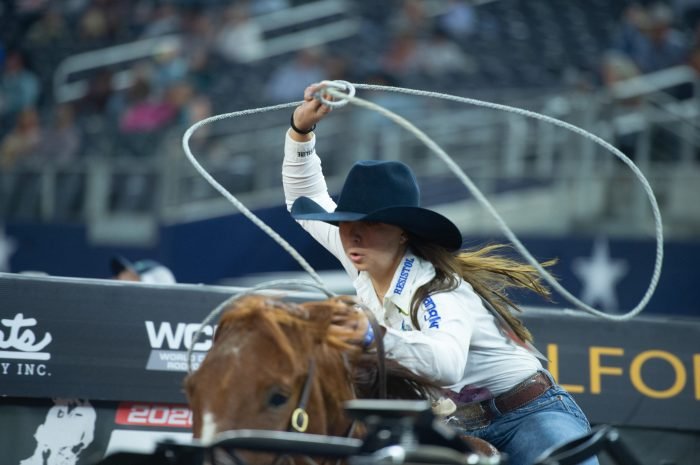
Rodeo, a thrilling spectacle of athleticism and skill, demands a high level of physical fitness and resilience. Women rodeo athletes face unique challenges due to differences in body mechanics and strength compared to their male counterparts. This section delves into the specific physical demands of rodeo events, highlighting the unique challenges faced by women and the potential for injuries.
Physical Requirements for Different Rodeo Events
The physical demands of rodeo events vary significantly depending on the specific discipline.
- Barrel Racing: This event requires a combination of speed, agility, and precision. Riders must maneuver their horses around three barrels in a cloverleaf pattern, aiming for the fastest time. The physical demands include strong core muscles for balance and control, as well as powerful leg muscles for guiding the horse and maintaining balance.
- Goat Tying: This event requires quick reflexes, agility, and the ability to handle a struggling goat. The rider must dismount, catch the goat, tie its legs together, and then remount, all in the shortest time possible. Goat tying demands strength and coordination, particularly in the arms and hands, as well as the ability to remain calm under pressure.
- Breakaway Roping: In this event, the rider must rope a calf around the neck, causing the rope to break away from the saddle horn, marking the end of the run. Breakaway roping requires precision and speed in roping, along with a strong core and leg muscles for balance and control.
Potential for Injuries in Rodeo
Rodeo is inherently dangerous, with a high risk of injuries. Women, with their different body mechanics and strength profiles, may be susceptible to certain injuries.
- Concussions: The impact of a fall or a collision with a horse or animal can cause a concussion. This risk is heightened for women due to their generally lower neck strength and head size, which can make them more vulnerable to head injuries.
- Spinal Injuries: Falls and collisions can also result in spinal injuries. Women, with their narrower shoulders and hips, may be more prone to certain types of spinal injuries, particularly in the thoracic region.
- Muscle Strains and Tears: The repetitive movements and high impact forces involved in rodeo can lead to muscle strains and tears. These injuries are common in all rodeo athletes, but women may be more susceptible to certain types of muscle strains due to their lower muscle mass and different muscle fiber composition.
Women’s Health Issues in Rodeo
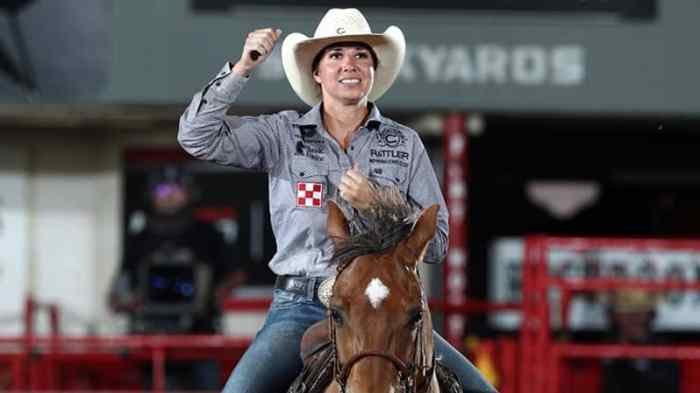
Rodeo, a physically demanding sport, presents unique health challenges for women. While the sport offers camaraderie and excitement, it’s essential to understand the specific health concerns women face and access resources to address them effectively.
Musculoskeletal Injuries
Musculoskeletal injuries are prevalent in rodeo, impacting both men and women. However, women may experience specific challenges due to anatomical differences and hormonal fluctuations. For instance, women’s ligaments are generally more flexible than men’s, making them more susceptible to sprains and tears.
Women in rodeo face a higher risk of:
- Sprains and tears: Ligament injuries are common in rodeo events, particularly in events like barrel racing, where sudden turns and stops put stress on the ankles and knees.
- Stress fractures: Repetitive stress on bones, especially in events like breakaway roping and goat tying, can lead to stress fractures in the feet, legs, and back.
- Rotator cuff injuries: The repetitive motion of throwing a rope or wrestling a calf can lead to tears in the rotator cuff muscles in the shoulder.
“Women in rodeo are more likely to experience ACL tears than men, due to factors such as wider hip angles and weaker ligaments.” Dr. Sarah Jones, Sports Medicine Specialist
Hormonal Imbalances
The demanding physical nature of rodeo can impact women’s hormonal balance, potentially leading to:
- Irregular menstrual cycles: The strenuous physical activity, travel, and stress associated with rodeo can disrupt the normal hormonal cycles, causing irregularities in menstruation.
- Amenorrhea: In extreme cases, the combination of intense training, low body fat, and stress can lead to amenorrhea, the absence of menstruation.
- Bone health: Low estrogen levels, which can occur due to intense training and dietary restrictions, can increase the risk of osteoporosis and bone fractures.
Mental Health Challenges
Rodeo, like any competitive sport, can be mentally challenging. Women in rodeo may face:
- Anxiety and depression: The pressure to perform, travel, and manage a demanding schedule can contribute to anxiety and depression.
- Eating disorders: The focus on weight and body image in rodeo can lead to disordered eating patterns.
- Body image issues: The emphasis on physical appearance in rodeo can create pressure on women to conform to certain body standards.
Research and Support
There is a growing body of research focusing on women’s health in rodeo.
Rodeo women face unique health challenges, from musculoskeletal injuries to the demanding physical and mental strain of their sport. Maintaining good health is crucial for their performance and longevity, and that’s where places like leahi health kailua come in. With a focus on holistic care, they can provide the support and expertise these athletes need to stay strong and healthy, both on and off the rodeo circuit.
- The National Cowgirl Museum and Hall of Fame has initiated research projects to address the unique health concerns of women in rodeo.
- The Women’s Professional Rodeo Association (WPRA) has partnered with healthcare providers to offer resources and support to its members.
- Studies conducted by universities and sports medicine centers are shedding light on the specific health risks and needs of women in rodeo.
Women in rodeo have access to a variety of support networks:
- WPRA: The Women’s Professional Rodeo Association offers resources, educational materials, and support services for women in rodeo.
- National Cowgirl Museum and Hall of Fame: The museum provides educational programs and resources on women’s history in rodeo and promotes women’s health initiatives.
- Sports medicine clinics and healthcare professionals: Specialized sports medicine clinics and healthcare professionals can provide comprehensive care and guidance for women in rodeo.
The Role of Nutrition and Fitness in Rodeo Performance: Rodeo Women’s Health
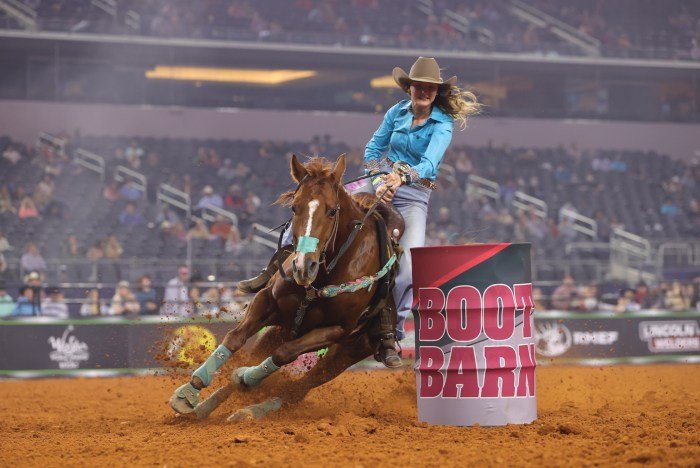
Rodeo athletes, particularly women, require a tailored approach to nutrition and fitness to optimize their performance and minimize the risk of injury. A well-rounded regimen that encompasses proper nutrition, strength training, flexibility, and cardiovascular health is crucial for success in rodeo.
Tailored Nutrition Plans for Rodeo Athletes
A balanced diet is essential for rodeo athletes, providing the energy and nutrients needed to fuel intense training and competitions. Women in rodeo often face unique nutritional challenges due to their demanding schedules and the need to maintain a healthy weight while building muscle mass.
A tailored nutrition plan should prioritize:
- Adequate Calorie Intake:Rodeo athletes need sufficient calories to support their high energy expenditure. The exact calorie requirement varies based on individual factors such as body weight, activity level, and training intensity.
- Macronutrient Balance:A balanced intake of carbohydrates, proteins, and healthy fats is crucial. Carbohydrates provide energy, proteins support muscle growth and repair, and healthy fats contribute to hormone production and cell function.
- Essential Micronutrients:Rodeo athletes need a variety of vitamins and minerals, including iron, calcium, vitamin D, and B vitamins. Iron supports red blood cell production, calcium is essential for bone health, vitamin D aids in calcium absorption, and B vitamins are vital for energy metabolism.
- Hydration:Maintaining adequate hydration is essential for optimal performance and recovery. Water is crucial for temperature regulation, nutrient transport, and waste removal.
Sample Training Regimen for Rodeo Athletes
A comprehensive training regimen for rodeo athletes should include strength training, flexibility exercises, and cardiovascular conditioning.
- Strength Training:Strength training is essential for building muscle mass, improving power, and reducing the risk of injuries. Exercises should target major muscle groups, including the legs, core, back, and shoulders. Examples include squats, deadlifts, lunges, push-ups, and rows.
- Flexibility Exercises:Flexibility exercises help improve range of motion, reduce muscle soreness, and prevent injuries. Stretching should focus on all major muscle groups, including the hamstrings, quadriceps, calves, back, and shoulders.
- Cardiovascular Conditioning:Cardiovascular exercise improves endurance, stamina, and overall fitness. Examples include running, swimming, cycling, and elliptical training.
The Impact of Proper Hydration on Rodeo Performance
Hydration plays a critical role in rodeo performance. Rodeo events often take place in hot and humid conditions, increasing the risk of dehydration. Dehydration can lead to fatigue, muscle cramps, decreased performance, and increased risk of injury.
- Maintaining Hydration:Rodeo athletes should drink plenty of water throughout the day, especially during training and competition. They should also consider consuming electrolyte-rich beverages to replenish lost minerals.
- Monitoring Hydration:Athletes should monitor their urine color, which can be an indicator of hydration status. Dark yellow urine suggests dehydration, while pale yellow or clear urine indicates adequate hydration.
Mental Health and Well-being in Rodeo

Rodeo is a demanding sport both physically and mentally. Women in rodeo face unique challenges that can impact their mental health and well-being. The pressure to perform, the risk of injury, and the constant travel can take a toll on their emotional state.
This section explores the mental and emotional demands of rodeo competition, highlighting potential stressors for women, and provides strategies for managing stress, anxiety, and burnout in rodeo.
Stressors in Rodeo
Rodeo presents a variety of stressors that can impact women’s mental health. The competitive nature of the sport, coupled with the constant pressure to perform at a high level, can lead to anxiety and stress. The risk of injury is another significant stressor, as it can lead to physical pain, emotional distress, and financial hardship.
The demanding travel schedule and the isolation that can come with being on the road can also contribute to feelings of loneliness and burnout.
Strategies for Managing Stress and Anxiety
There are a number of strategies that women in rodeo can use to manage stress and anxiety.
- Mindfulness and Meditation: Mindfulness and meditation practices can help women to focus on the present moment and reduce feelings of anxiety and stress.
- Exercise and Physical Activity: Regular exercise can help to reduce stress hormones and improve mood.
- Sleep Hygiene: Getting enough sleep is essential for maintaining good mental health.
- Healthy Diet: A balanced diet can provide the nutrients needed to support mental well-being.
- Support System: Having a strong support system of friends, family, and mentors can help women to cope with the challenges of rodeo.
- Professional Help: If stress and anxiety are overwhelming, seeking professional help from a therapist or counselor can be beneficial.
Resources and Support Systems
Several resources and support systems are available to women in rodeo who are struggling with mental health challenges.
- Professional Organizations: Organizations such as the Women’s Professional Rodeo Association (WPRA) and the Professional Rodeo Cowboys Association (PRCA) offer mental health resources and support services to their members.
- Mental Health Professionals: There are many mental health professionals who specialize in working with athletes.
- Support Groups: Support groups provide a safe and confidential space for women in rodeo to connect with others who understand their experiences.
- Online Resources: Many online resources provide information and support for mental health issues.
Women’s Role in Rodeo History and Culture
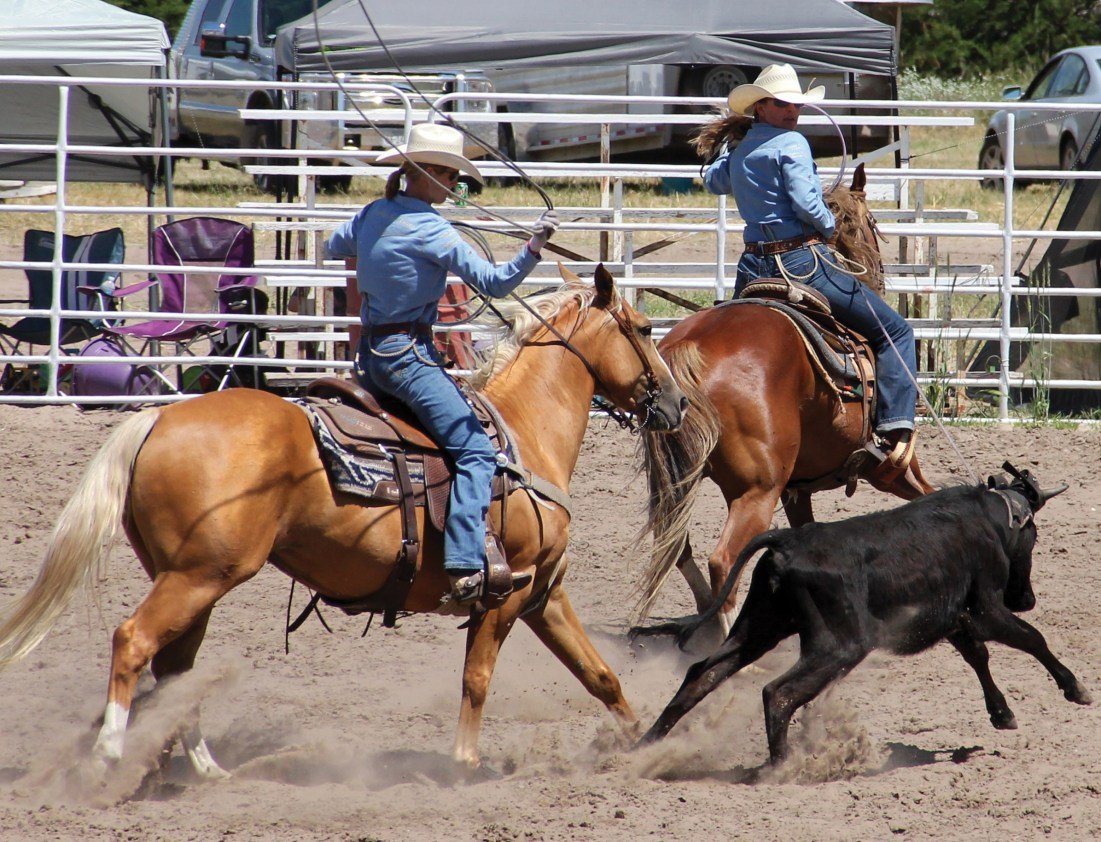
Women have always played a vital role in rodeo, from its earliest days to the modern era. Their contributions have shaped the sport’s traditions, culture, and evolution, proving that rodeo is not just a man’s world. This section explores the history of women in rodeo, their impact on the sport’s culture, and their ongoing influence on its future.
Timeline of Notable Women in Rodeo History
Women have been involved in rodeo since its inception, participating in various roles and making significant contributions to the sport’s development. This section provides a timeline of notable women in rodeo history, highlighting their achievements and impact.
- Early 20th Century:
- 1910s:Women began competing in barrel racing, which quickly gained popularity as a rodeo event.
- 1920s:The first women’s rodeo association, the Girls’ Rodeo Association, was formed, providing a platform for women to compete and showcase their skills.
- Mid-20th Century:
- 1940s:Women’s rodeo events gained more recognition and popularity, with women competing in various events, including barrel racing, goat tying, and breakaway roping.
- 1950s:The Women’s Professional Rodeo Association (WPRA) was established, providing a structured organization for women rodeo athletes.
- Late 20th Century and Beyond:
- 1970s:Women’s rodeo continued to grow in popularity, with women competing at higher levels and earning recognition for their skills and athleticism.
- 1980s:The WPRA established the National Finals Rodeo (NFR) for women, providing a platform for the top female rodeo athletes to compete for the championship title.
- 1990s-Present:Women in rodeo continue to break barriers, compete at the highest levels, and inspire future generations of female rodeo athletes.
Evolution of Women’s Participation in Rodeo
The evolution of women’s participation in rodeo has been marked by a gradual shift in opportunities, perceptions, and acceptance. From limited participation in the early days to full integration in the modern era, women’s role in rodeo has evolved significantly.
- Early Days:
- Women were initially limited to performing in “side events” like barrel racing, goat tying, and breakaway roping, while men dominated the main events like bull riding, saddle bronc riding, and bareback riding.
- Their participation was often met with skepticism and resistance from some, who believed rodeo was a man’s sport.
- Mid-20th Century:
- As women continued to demonstrate their skills and athleticism, their participation in rodeo events expanded, and they began competing alongside men in more events.
- The establishment of the WPRA provided a platform for women to compete professionally and gain recognition for their achievements.
- Late 20th Century and Beyond:
- Women’s rodeo reached new heights of popularity and acceptance, with women competing at the highest levels and earning significant prize money and sponsorships.
- Women’s rodeo events, particularly barrel racing, have become some of the most popular and exciting events in the sport.
Impact of Women in Rodeo on its Culture and Traditions
Women’s participation in rodeo has had a profound impact on the sport’s culture and traditions. Their influence is evident in various aspects of rodeo, from the events themselves to the clothing and attire worn by competitors.
- Barrel Racing:This event, introduced by women, has become one of the most popular and exciting events in rodeo, showcasing the speed, agility, and horsemanship of female competitors.
- Barrel racing has become a staple event in rodeo, attracting large crowds and generating significant media attention.
- Women’s Rodeo Attire:Women have contributed to the evolution of rodeo attire, with their unique styles and designs adding a touch of femininity and elegance to the sport.
- From the intricate beadwork and embroidery on their shirts and vests to the vibrant colors and patterns of their jeans, women’s rodeo attire reflects their individuality and style.
- Role Models:Women in rodeo have become role models for young girls, inspiring them to pursue their dreams and challenge traditional gender roles.
- Their success in rodeo has demonstrated that women can excel in traditionally male-dominated sports, paving the way for future generations of female athletes.
Rodeo women face unique health challenges due to the physically demanding nature of their sport. From injuries sustained during competitions to the impact of travel and demanding schedules, it’s crucial for them to have access to quality healthcare. For those in the Greensburg area, excela health westmoreland hospital greensburg offers comprehensive medical services that can address the specific needs of rodeo athletes, ensuring they can continue pursuing their passion with confidence.
- Their success in rodeo has demonstrated that women can excel in traditionally male-dominated sports, paving the way for future generations of female athletes.
Future Directions for Women in Rodeo
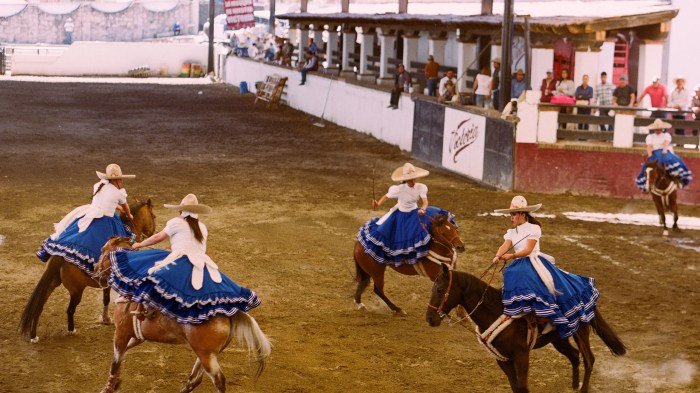
The future of women in rodeo holds both challenges and exciting opportunities. While women have made significant strides in the sport, there are still areas where progress is needed to ensure equitable participation and success. This section will explore key challenges and opportunities, initiatives that can support women’s participation, and the potential for increased visibility and representation.
Challenges and Opportunities, Rodeo women’s health
The rodeo industry faces several challenges that specifically impact women’s participation and success. These include limited sponsorship opportunities, unequal prize money, and a lack of mentorship and role models. However, there are also emerging opportunities for women to break down barriers and pave the way for future generations.
Rodeo women face unique health challenges, from injuries sustained during competitions to the demanding physical and mental strain of the sport. LSU students, especially those involved in rodeo, can find support and resources at LSU Student Health , which offers a wide range of services, including sports medicine and counseling.
By understanding the specific needs of rodeo women, LSU Student Health can help these athletes stay healthy and perform at their best.
Initiatives to Support Women in Rodeo
Several initiatives and programs are underway to support women’s participation and success in rodeo. These include:
- Increased scholarship opportunities: Organizations like the Women’s Professional Rodeo Association (WPRA) and the National Cowgirl Association (NCA) offer scholarships to female rodeo athletes, helping them pursue their dreams.
- Mentorship programs: Programs connect experienced female rodeo athletes with younger aspiring competitors, providing guidance and support.
- Workshops and clinics: Specialized workshops and clinics focus on specific rodeo disciplines and offer training and skill development opportunities for women.
- Advocacy groups: Organizations like the WPRA and NCA advocate for equal opportunities and fair treatment for women in rodeo, working to address issues such as prize money disparities and sponsorship opportunities.
Increased Visibility and Representation
The increased visibility and representation of women in rodeo are crucial for inspiring future generations and fostering a more inclusive and equitable sport. This can be achieved through:
- Media coverage: Increased media coverage of women’s rodeo events and athletes can help raise awareness and attract new audiences.
- Social media platforms: Social media can be a powerful tool for showcasing the talent and accomplishments of women in rodeo.
- Role models: Highlighting the success stories of prominent female rodeo athletes can inspire young women to pursue their passions.
Epilogue
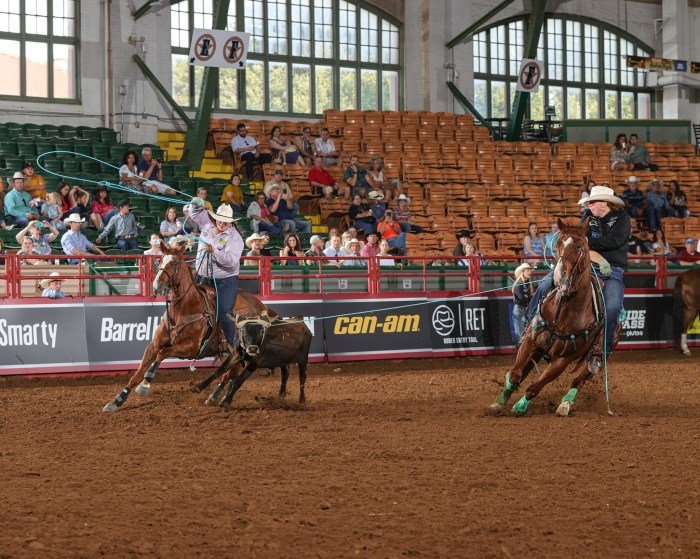
Rodeo women are not only athletes but pioneers, paving the way for increased visibility and representation in a historically male-dominated sport. By understanding the unique challenges and triumphs of rodeo women, we can foster a culture of support and empowerment, ensuring that these incredible athletes continue to thrive and inspire generations to come.
As we move forward, it is essential to recognize and address the unique needs of rodeo women, creating a more inclusive and supportive environment for them to excel in their chosen sport.
FAQ Summary
What are some common injuries rodeo women experience?
Rodeo women are susceptible to a range of injuries, including musculoskeletal injuries like sprains, strains, and fractures. These can occur due to the high-impact nature of events, repetitive movements, and falls.
How can rodeo women manage stress and anxiety?
Stress and anxiety are common in rodeo due to the competitive nature of the sport. Effective stress management techniques include mindfulness, meditation, exercise, and seeking support from mental health professionals.
What are some resources available for rodeo women’s health?
Several organizations and resources are dedicated to supporting rodeo women’s health, including the Women’s Professional Rodeo Association (WPRA) and the National Cowgirl Museum and Hall of Fame. These organizations offer educational materials, health resources, and support networks.